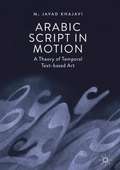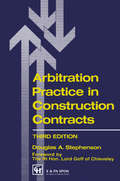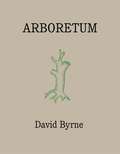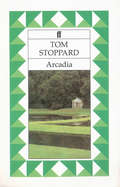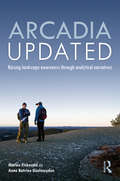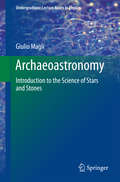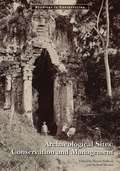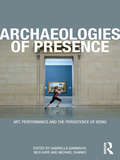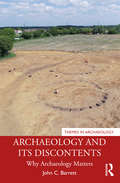- Table View
- List View
Arabic Glitch: Technoculture, Data Bodies, and Archives
by Laila Shereen SakrArabic Glitch explores an alternative origin story of twenty-first century technological innovation in digital politics—one centered on the Middle East and the 2011 Arab uprisings. Developed from an archive of social media data collected over the decades following the 2003 U.S. invasion of Iraq, this book interrogates how the logic of programming technology influences and shapes social movements. Engaging revolutionary politics, Arab media, and digital practice in form, method, and content, Laila Shereen Sakr formulates a media theory that advances the concept of the glitch as a disruptive media affordance. She employs data analytics to analyze tweets, posts, and blogs to describe the political culture of social media, and performs the results under the guise of the Arabic-speaking cyborg VJ Um Amel. Playing with multiple voices that span across the virtual and the real, Sakr argues that there is no longer a divide between the virtual and embodied: both bodies and data are physically, socially, and energetically actual. Are we cyborgs or citizens—or both? This book teaches us how a region under transformation became a vanguard for new thinking about digital systems: the records they keep, the lives they impact, and how to create change from within.
Arabic Glitch: Technoculture, Data Bodies, and Archives
by Laila Shereen SakrArabic Glitch explores an alternative origin story of twenty-first century technological innovation in digital politics—one centered on the Middle East and the 2011 Arab uprisings. Developed from an archive of social media data collected over the decades following the 2003 U.S. invasion of Iraq, this book interrogates how the logic of programming technology influences and shapes social movements. Engaging revolutionary politics, Arab media, and digital practice in form, method, and content, Laila Shereen Sakr formulates a media theory that advances the concept of the glitch as a disruptive media affordance. She employs data analytics to analyze tweets, posts, and blogs to describe the political culture of social media, and performs the results under the guise of the Arabic-speaking cyborg VJ Um Amel. Playing with multiple voices that span across the virtual and the real, Sakr argues that there is no longer a divide between the virtual and embodied: both bodies and data are physically, socially, and energetically actual. Are we cyborgs or citizens—or both? This book teaches us how a region under transformation became a vanguard for new thinking about digital systems: the records they keep, the lives they impact, and how to create change from within.
Arabic Script in Motion: A Theory of Temporal Text-based Art
by M. Javad KhajaviThis book is a pioneering study of temporal typography and time-based calligraphic art written in the Arabic system of writing. Inspired by the innate qualities of Arabic script as well as certain practices in Islamic calligraphy and contemporary calligraphic art, the book devises five broad categories of temporal behaviors for Arabic characters in time-based media. It goes onto expand the vocabulary used to describe Arabic script’s appearance in time-based media and proposes a theory to help artists, practitioners, and theoreticians push the boundaries of temporal text-based art. Furthermore, it tackles questions of legibility and readability, and seeks to understand how temporality of Arabic text influences the creation of meaning. This book will therefore appeal not only to animators, designers, and artists, but also to commentators and scholars who deal with temporal text-based art written in Arabic script.
Arabs, Politics, and Performance (ISSN)
by Samer Al-Saber Roaa Ali George PotterThis book is a ground-breaking collection on contemporary Arab theatre.Through three sections discussing occupation and resistance, diaspora, migration, and refugees, and nationalism and belonging, this study provides nuanced responses to the contested points of intersection between Arab culture and the West, as well as many of the major concerns within contemporary Arab theatre. The collection draws together scholars from the Middle East, North Africa, Europe, and the United States who write about Arab theatre and the representation of Arabs on European and American stages. It introduces concerns in contemporary Arab theatre, the regions in which Arab theatre is performed, and the issues with representations of Arabs onstage.This volume will be of great significance for those interested in expanding the range of global, postcolonial, African, Asian, or diasporic theatre that they study, teach, or stage.
Arabs, Politics, and Performance (ISSN)
This book is a ground-breaking collection on contemporary Arab theatre.Through three sections discussing occupation and resistance, diaspora, migration, and refugees, and nationalism and belonging, this study provides nuanced responses to the contested points of intersection between Arab culture and the West, as well as many of the major concerns within contemporary Arab theatre. The collection draws together scholars from the Middle East, North Africa, Europe, and the United States who write about Arab theatre and the representation of Arabs on European and American stages. It introduces concerns in contemporary Arab theatre, the regions in which Arab theatre is performed, and the issues with representations of Arabs onstage.This volume will be of great significance for those interested in expanding the range of global, postcolonial, African, Asian, or diasporic theatre that they study, teach, or stage.
Arbeiten in der Gruppe: Konzeption und Wirklichkeit des ÖVA-Bürohauses in Mannheim
by Wilhelm Otto GeberzahnAls der Wettbewerb für das ÖVA-Gebäude im Jahr 1974 ausgeschrieben wurde, zweifelten nur wenige Planer und Unternehmen am Konzept der damals üblichen Großraumbüros. Doch bei der ÖVA reagierte man einerseits sensibel auf die Bedürfnisse der Mitarbeiter, andererseits bezog man früher als anderswo die neuesten Technologien in die Büroarbeit mit ein. Aus dieser Situation entstand das erste Gruppenbürohaus, das die Nachteile des Großraumbüros ausschließen sollte. Gleichzeitig wollte man aber den Mitarbeitern Arbeitsplätze schaffen, die "neben den funktionalen insbesondere den arbeitsmedizinischen und arbeitspsychologischen Erfordernissen gerecht werden" (Prof. H. Striffler). Deshalb wurde der Gestaltung des Arbeitsplatzes schon zu Beginn der Planung die gleiche Sorgfalt zuteil wie der Architektur. Die Büromöbelindustrie konnte damals die hohen Anforderungen, die Bauherr und Architekten an den Arbeitplatz stellten, noch nicht erfüllen. Also wurde ein Konzept entwickelt, das seiner Zeit voraus war, das später gesetzlich verankerte Vorschriften an den Bildschirmarbeitsplatz vorwegnahm.Das Buch skizziert die Entwicklung eines bedeutenden öffentlichen Versicherungsunternehmens. Es zeigt, wie problemorientiertes und verantwortungsbewußtes Planen zu innovativen, die Zeit überdauernden Lösungen führen kann. Für alle diejenigen, die sich mit der Planung von Büros und Bürogebäuden beschäftigen, birgt das Buch nicht nur eine Fülle von Sachinformationen, sondern vermittelt jenseits architektonischer Moden den Geist der Offenheit, der für zukunftsorientierte Lösungen im Bürohausbau immer wichtiger wird.
»Arbeitende Bilder«: Die Skulptur im Deutschen Kaiserreich zwischen künstlerischer Aneignung und sozialer Wirklichkeit (Image #135)
by Sarah CzirrSkulpturen im Deutschen Kaiserreich waren meist kostenintensive Auftrags- bzw. kleinformatige Reproduktionskunst mit einem hohen Grad an Öffentlichkeit. Dies scheint mit dem gerade im 19. Jahrhundert vertretenen Diktum der autonomen Kunst im Widerspruch zu stehen. Zudem war der Kunstdiskurs bestimmt von einer Kontroverse um die Ikonografie der Moderne. Sarah Czirr untersucht in diesem Kontext das sich eröffnende Spannungsfeld von künstlerischer Aneignung und sozialer Wirklichkeit, in dem Skulpturen in Zeiten der Industrialisierung zu »arbeitenden Bildern«, zu produktiven Akteuren verschiedener Seiten werden, ohne dass die Gesetze der »Kunstwirklichkeit« je außer Kraft treten.
Arbitration Practice in Construction Contracts
by D.A. StephensonConsiders each stage in the course of an arbitration in detail, from the claimant's decision to seek the means of resolving a dispute to the arbitrator's award, explaining clearly and concisely what is expected of the claimant, respondent and arbitrator and when.
Arbitration Practice in Construction Contracts
by D.A. StephensonConsiders each stage in the course of an arbitration in detail, from the claimant's decision to seek the means of resolving a dispute to the arbitrator's award, explaining clearly and concisely what is expected of the claimant, respondent and arbitrator and when.
Arboreal Symbolism in European Art, 1300–1800 (Routledge Research in Art and Religion)
by Katherine T. BrownArboreal Symbolism in European Art, 1300–1800 probes the significance of trees in religious iconography of Western art.Based in the disciplines of art history, botany, and theology, this study focuses on selected works of art in which tree forms embody and reflect Christian themes. Through this triple lens, Brown examines trees that early modern artists rendered as sacred symbols—symbols with origins in the Old Testament, New Testament, Greek and Roman cultures, and early medieval legends. Tree components and wood depicted in works of art can serve as evidence for early modern artists’ embrace of biblical metaphor, classical sources, and devotional connotations. The author considers how artists rendered seasonal change in Christian narratives to emphasize themes of spiritual transformation. Brown argues that many artists and their patrons drew parallels between the life cycle of a tree and events in the Gospels with their respective annual, liturgical celebrations.This book will interest scholars in art history, religion, humanities, and interdisciplinary studies.
Arboreal Symbolism in European Art, 1300–1800 (Routledge Research in Art and Religion)
by Katherine T. BrownArboreal Symbolism in European Art, 1300–1800 probes the significance of trees in religious iconography of Western art.Based in the disciplines of art history, botany, and theology, this study focuses on selected works of art in which tree forms embody and reflect Christian themes. Through this triple lens, Brown examines trees that early modern artists rendered as sacred symbols—symbols with origins in the Old Testament, New Testament, Greek and Roman cultures, and early medieval legends. Tree components and wood depicted in works of art can serve as evidence for early modern artists’ embrace of biblical metaphor, classical sources, and devotional connotations. The author considers how artists rendered seasonal change in Christian narratives to emphasize themes of spiritual transformation. Brown argues that many artists and their patrons drew parallels between the life cycle of a tree and events in the Gospels with their respective annual, liturgical celebrations.This book will interest scholars in art history, religion, humanities, and interdisciplinary studies.
Arboretum
by David ByrneFor over thirty years, besides making music, David Byrne has focused his unique genius upon forms as diverse as the archaeology of music as we know it, architectural photography and the uses of PowerPoint. Now he presents his most personal work to date, a collection of drawings exploring the form of the tree diagram. Arboretum is an eclectic blend of science, automatic writing, self-analysis and satire. A journey through irrational logic - the application of scientific rigour and form to irrational premises, proceeding from careful nonsense to unexpected sense. The tree diagram is a form that might reveal more about yourself than you dreamed possible.
Arc de Triomphe (large print)
by RnibThis image is of the huge triumphal arch in Paris, France. There is a locator dot shown, which will be at the top left when the image is the correct way up. There is a very large relief sculpture at the base of the pillar of the arch on the left. It is called "The Triumph of Napoleon" and is a tribute to Bonaparte's many military victories. The spirit of Victory crowns Napoleon with a laurel wreath on the right, her arm on the left is reaching up towards Napoleon's head. Napoleon is wearing a Roman toga in the centre of the piece. Up from these two figures Fame blows a trumpet. There are several bowing and prostrate figures at Napoleon's feet, they have not been shown due to lack of space. There are other decorative elements of the sculptural relief. The wiggly line around the figures shows the extent of the entire piece. The sculptural relief “stands†on a tall plinth in the bottom left of the image. Up from this piece is a smaller sculptural relief framed in a rectangle of stonework. This is called “The Battle of Aboukir.†On the left is a man on a horse. To the right are two standing soldiers. There are many more figures in this piece which have not been shown because of lack of space. Up from this and going right across the width of the arch is a frieze of figures. There are bands of soldiers on foot, on horseback, musicians drumming or trumpeting the soldiers into battle. The sculptural figures are too small to be shown here although they would actually stand about a metre tall. Up from the frieze is a row of circles. These are stone shields each one representing military victory. Just above the archway are two angels. There is one on each side and they face and reach out to each other. Moving down the column on the right there is another smaller sculptural relief framed in a rectangle of stonework. This is depicts the funeral of Marceau. In the centre is a body laid out on a sort of bed. To the left is a standing figure looking at the body. To the right is a figure facing away from the body and leaning on another man in grief. The other figure is not shown. Several other figures are standing around, these are not shown either because of lack of space. Down from this piece is a second very large relief sculpture at the base of the pillar of the arch. It also “stands†on a tall plinth in the bottom right of the image. This is called "The Departure of the Volunteers of 1792". There are two standing figures. The one on the left is reaching out to the left. Up from these figures is a winged woman shouting and rallying the French people against an enemy from a foreign nation. There are several other figures and weapons which have not been shown due to lack of space. The wiggly line around the figures shows the extent of the entire piece. This piece is very famous and aroused a great deal of patriotism of its own among the Parisians that it earned its nickname of "La Marseillaise". The arch is very large: 164 feet (50m) high, 148 feet (45m) wide and 72 feet (22m) deep. In the bottom centre of the image is a medium family car for size comparison.
Arc de Triomphe (UEB contracted)
by RnibThis image is of the huge triumphal arch in Paris, France. There is a locator dot shown, which will be at the top left when the image is the correct way up. There is a very large relief sculpture at the base of the pillar of the arch on the left. It is called "The Triumph of Napoleon" and is a tribute to Bonaparte's many military victories. The spirit of Victory crowns Napoleon with a laurel wreath on the right, her arm on the left is reaching up towards Napoleon's head. Napoleon is wearing a Roman toga in the centre of the piece. Up from these two figures Fame blows a trumpet. There are several bowing and prostrate figures at Napoleon's feet, they have not been shown due to lack of space. There are other decorative elements of the sculptural relief. The wiggly line around the figures shows the extent of the entire piece. The sculptural relief “stands†on a tall plinth in the bottom left of the image. Up from this piece is a smaller sculptural relief framed in a rectangle of stonework. This is called “The Battle of Aboukir.†On the left is a man on a horse. To the right are two standing soldiers. There are many more figures in this piece which have not been shown because of lack of space. Up from this and going right across the width of the arch is a frieze of figures. There are bands of soldiers on foot, on horseback, musicians drumming or trumpeting the soldiers into battle. The sculptural figures are too small to be shown here although they would actually stand about a metre tall. Up from the frieze is a row of circles. These are stone shields each one representing military victory. Just above the archway are two angels. There is one on each side and they face and reach out to each other. Moving down the column on the right there is another smaller sculptural relief framed in a rectangle of stonework. This is depicts the funeral of Marceau. In the centre is a body laid out on a sort of bed. To the left is a standing figure looking at the body. To the right is a figure facing away from the body and leaning on another man in grief. The other figure is not shown. Several other figures are standing around, these are not shown either because of lack of space. Down from this piece is a second very large relief sculpture at the base of the pillar of the arch. It also “stands†on a tall plinth in the bottom right of the image. This is called "The Departure of the Volunteers of 1792". There are two standing figures. The one on the left is reaching out to the left. Up from these figures is a winged woman shouting and rallying the French people against an enemy from a foreign nation. There are several other figures and weapons which have not been shown due to lack of space. The wiggly line around the figures shows the extent of the entire piece. This piece is very famous and aroused a great deal of patriotism of its own among the Parisians that it earned its nickname of "La Marseillaise". The arch is very large: 164 feet (50m) high, 148 feet (45m) wide and 72 feet (22m) deep. In the bottom centre of the image is a medium family car for size comparison.
Arc de Triomphe (UEB uncontracted)
by RnibThis image is of the huge triumphal arch in Paris, France. There is a locator dot shown, which will be at the top left when the image is the correct way up. There is a very large relief sculpture at the base of the pillar of the arch on the left. It is called "The Triumph of Napoleon" and is a tribute to Bonaparte's many military victories. The spirit of Victory crowns Napoleon with a laurel wreath on the right, her arm on the left is reaching up towards Napoleon's head. Napoleon is wearing a Roman toga in the centre of the piece. Up from these two figures Fame blows a trumpet. There are several bowing and prostrate figures at Napoleon's feet, they have not been shown due to lack of space. There are other decorative elements of the sculptural relief. The wiggly line around the figures shows the extent of the entire piece. The sculptural relief “stands†on a tall plinth in the bottom left of the image. Up from this piece is a smaller sculptural relief framed in a rectangle of stonework. This is called “The Battle of Aboukir.†On the left is a man on a horse. To the right are two standing soldiers. There are many more figures in this piece which have not been shown because of lack of space. Up from this and going right across the width of the arch is a frieze of figures. There are bands of soldiers on foot, on horseback, musicians drumming or trumpeting the soldiers into battle. The sculptural figures are too small to be shown here although they would actually stand about a metre tall. Up from the frieze is a row of circles. These are stone shields each one representing military victory. Just above the archway are two angels. There is one on each side and they face and reach out to each other. Moving down the column on the right there is another smaller sculptural relief framed in a rectangle of stonework. This is depicts the funeral of Marceau. In the centre is a body laid out on a sort of bed. To the left is a standing figure looking at the body. To the right is a figure facing away from the body and leaning on another man in grief. The other figure is not shown. Several other figures are standing around, these are not shown either because of lack of space. Down from this piece is a second very large relief sculpture at the base of the pillar of the arch. It also “stands†on a tall plinth in the bottom right of the image. This is called "The Departure of the Volunteers of 1792". There are two standing figures. The one on the left is reaching out to the left. Up from these figures is a winged woman shouting and rallying the French people against an enemy from a foreign nation. There are several other figures and weapons which have not been shown due to lack of space. The wiggly line around the figures shows the extent of the entire piece. This piece is very famous and aroused a great deal of patriotism of its own among the Parisians that it earned its nickname of "La Marseillaise". The arch is very large: 164 feet (50m) high, 148 feet (45m) wide and 72 feet (22m) deep. In the bottom centre of the image is a medium family car for size comparison.
Arcadia: Arcadia - The Real Thing - Night And Day - Indian Ink - Hapgood (Sparknotes Literature Guide Ser.)
by Tom StoppardIn a large country house in Derbyshire in April 1809 sits Lady Thomasina Coverly, aged thirteen, and her tutor, Septimus Hodge. Through the window may be seen some of the '500 acres inclusive of lake' where Capability Brown's idealized landscape is about to give way to the 'picturesque' Gothic style: 'everything but vampires', as the garden historian Hannah Jarvis remarks to Bernard Nightingale when they stand in the same room 180 years later.Bernard has arrived to uncover the scandal which is said to have taken place when Lord Byron stayed at Sidley Park.Tom Stoppard's absorbing play takes us back and forth between the centuries and explores the nature of truth and time, the difference between the Classical and the Romantic temperament, and the disruptive influence of sex on our orbits in life - 'the attraction', as Hannah says, 'which Newton left out'.
Arcadia Updated: Raising landscape awareness through analytical narratives
by Marius Fiskevold Anne Katrine GeelmuydenArcadia Updated delves into the concept of landscape as it is shaped by the literary tradition and material works known as pastoral. Referring to several of the tradition’s works as well as scholarly critiques, Fiskevold and Geelmuyden highlight how individual landscape perception is primarily a cultural construct: each individual may see a unique landscape based on personal experiences, but simultaneously, landscape represents a tradition of engaging with nature and land, which has been largely forgotten. In re-engaging and connecting the practice of understanding landscapes with the pastoral tradition, the authors establish a common ground for treating landscape as an object of analysis in landscape planning. Arcadia Updated contributes to the methodological debate concerning landscape character assessment. Including 30 black-and-white images, this book analyses how humans engage with land organically, materially and communicatively. It seeks to raise landscape awareness as both an individual and a collective act of imagination. The practice of analysing landscapes is an ongoing culture of reinterpreting the land as landscape in response to society’s development and technical progress. The role of the landscape analyst is to interpret the contemporary world and offer visual explanations of it. This book will be beneficial to professional landscape planners as well as to academics and students of landscape, literature and cultural studies. It provides an essential contribution to the cross-disciplinarity of the landscape discourse.
Arcadia Updated: Raising landscape awareness through analytical narratives
by Marius Fiskevold Anne Katrine GeelmuydenArcadia Updated delves into the concept of landscape as it is shaped by the literary tradition and material works known as pastoral. Referring to several of the tradition’s works as well as scholarly critiques, Fiskevold and Geelmuyden highlight how individual landscape perception is primarily a cultural construct: each individual may see a unique landscape based on personal experiences, but simultaneously, landscape represents a tradition of engaging with nature and land, which has been largely forgotten. In re-engaging and connecting the practice of understanding landscapes with the pastoral tradition, the authors establish a common ground for treating landscape as an object of analysis in landscape planning. Arcadia Updated contributes to the methodological debate concerning landscape character assessment. Including 30 black-and-white images, this book analyses how humans engage with land organically, materially and communicatively. It seeks to raise landscape awareness as both an individual and a collective act of imagination. The practice of analysing landscapes is an ongoing culture of reinterpreting the land as landscape in response to society’s development and technical progress. The role of the landscape analyst is to interpret the contemporary world and offer visual explanations of it. This book will be beneficial to professional landscape planners as well as to academics and students of landscape, literature and cultural studies. It provides an essential contribution to the cross-disciplinarity of the landscape discourse.
Archaeoastronomy: Introduction to the Science of Stars and Stones (Undergraduate Lecture Notes in Physics)
by Giulio MagliThis book provides the first complete, easy to read, up-to-date account of the fascinating discipline of archaeoastronomy, in which the relationship between ancient constructions and the sky is studied in order to gain a better understanding of the ideas of the architects of the past and of their religious and symbolic worlds. The book is divided into three sections, the first of which explores the past relations between astronomy and people, power, the afterworld, architecture, and landscape. The fundamentals of archaeoastronomy are then addressed in detail, with coverage of the celestial coordinates; the apparent motion of the Sun, Moon, stars, and planets; observation of celestial bodies at the horizon; the use of astronomical software in archaeoastronomy; and current methods for making and analyzing measurements. The final section reviews what archaeoastronomy can now tell us about the nature and purpose of such sites and structures as Stonehenge, the Pyramids of Giza, Chichen Itza, the Campus Martius, and the Valley of the Temples of Agrigento. In addition, a set of exercises is provided that can be performed using non-commercial free software, e.g., Google Earth or Stellarium, and will equip readers to conduct their own research. Readers will find the book an ideal introduction to what has become a wide-ranging multidisciplinary science.
Archaeoastronomy: Introduction to the Science of Stars and Stones (Undergraduate Lecture Notes in Physics)
by Giulio MagliThis is a second edition of a textbook that provides the first comprehensive, easy-to-read, and up-to-date account of the fascinating discipline of archaeoastronomy, in which the relationship between ancient constructions and the sky is studied in order to gain a better understanding of the ideas of the architects of the past and of their religious and symbolic worlds. The book is divided into three sections, the first of which explores the past relations between astronomy and people, power, the afterworld, architecture, and landscape. The second part then discusses in detail the fundamentals of archaeoastronomy, including the celestial coordinates; the apparent motion of the sun, moon, stars, and planets; observation of celestial bodies at the horizon; the use of astronomical software in archaeoastronomy; and current methods for making and analyzing measurements. The final section reviews what archaeoastronomy can now tell us about the nature and purpose of such sites and structures as Stonehenge, the Pyramids of Giza, Chichen Itza, the Angkor Temples, the Campus Martius, and the Valley of the Temples of Agrigento. In addition, it provides a set of exercises that can be performed using non-commercial free software, e.g., Google Earth and Stellarium, and that will equip readers to conduct their own research. This new edition features a completely new chapter on archaeoastronomy in Asia and an “augmented reality” framework, which on the one hand enhances the didactic value of the book using direct links to the relevant sections of the author’s MOOC (online) lessons and, on the other, allows readers to directly experience – albeit virtually –many of the spectacular archaeological sites described in the book. This is an ideal introduction to what has become a wide-ranging multidisciplinary science.
Archaeological Sites: Conservation And Management (PDF)
by Sharon Sullivan Richard MackayThe fifth volume in the Getty¿s Readings in Conservation series features more than seventy texts that have made important contributions to the understanding of the conservation and management of archaeological sites, addressing key issues from both a historical and a contemporary perspective. The readings cover a broad spectrum of site types, geographic locations, cultural contexts, and methodological approaches and techniques. They range chronologically from early eighteenth-century memoirs and late nineteenth- and early twentieth-century texts by such pioneers as Heinrich Schliemann and Sir Arthur Evans to a thorough representation of recent scholarship. The volume is divided into five parts focusing on historical methods, concepts, and issues; conserving the archaeological resource; the physical conservation of archaeological sites; the cultural values of archaeological sites; and site management.
Archaeologies of Presence
by Gabriella Giannachi Nick Kaye Michael ShanksArchaeologies of Presence is a brilliant exploration of how the performance of presence can be understood through the relationships between performance theory and archaeological thinking. Drawing together carefully commissioned contributions by leading international scholars and artists, this radical new work poses a number of essential questions: What are the principle signifiers of theatrical presence? How is presence achieved through theatrical performance? What makes a memory come alive and live again? How is presence connected with identity? Is presence synonymous with 'being in the moment'? What is the nature of the ‘co-presence’ of audience and performer? Where does performance practice end and its documentation begin? Co-edited by performance specialists Gabriella Giannachi and Nick Kaye, and archaeologist Michael Shanks, Archaeologies of Presence represents an innovative and rewarding feat of interdisciplinary scholarship.
Archaeologies of Presence
by Gabriella Giannachi Nick Kaye Michael ShanksArchaeologies of Presence is a brilliant exploration of how the performance of presence can be understood through the relationships between performance theory and archaeological thinking. Drawing together carefully commissioned contributions by leading international scholars and artists, this radical new work poses a number of essential questions: What are the principle signifiers of theatrical presence? How is presence achieved through theatrical performance? What makes a memory come alive and live again? How is presence connected with identity? Is presence synonymous with 'being in the moment'? What is the nature of the ‘co-presence’ of audience and performer? Where does performance practice end and its documentation begin? Co-edited by performance specialists Gabriella Giannachi and Nick Kaye, and archaeologist Michael Shanks, Archaeologies of Presence represents an innovative and rewarding feat of interdisciplinary scholarship.
Archaeology and its Discontents: Why Archaeology Matters (Themes in Archaeology Series)
by John C. BarrettArchaeology and its Discontents examines the state of archaeology today and its development throughout the twentieth century, making a powerful case for new approaches. Surveying the themes of twentieth-century archaeological theory, Barrett looks at their successes, limitations, and failures. Seeing more failures and limitations than successes, he argues that archaeology has over-focused on explaining the human construction of material variability and should instead be more concerned with understanding how human diversity has been constructed. Archaeology matters, he argues, precisely because of the insights it can offer into the development of human diversity. The analysis and argument are illustrated throughout by reference to the development of the European Neolithic. Arguing both for new approaches and for the importance of archaeology as a discipline, Archaeology and its Discontents is for archaeologists at all levels, from student to professor and trainee to experienced practitioner.
Archaeology and its Discontents: Why Archaeology Matters (Themes in Archaeology Series)
by John C. BarrettArchaeology and its Discontents examines the state of archaeology today and its development throughout the twentieth century, making a powerful case for new approaches. Surveying the themes of twentieth-century archaeological theory, Barrett looks at their successes, limitations, and failures. Seeing more failures and limitations than successes, he argues that archaeology has over-focused on explaining the human construction of material variability and should instead be more concerned with understanding how human diversity has been constructed. Archaeology matters, he argues, precisely because of the insights it can offer into the development of human diversity. The analysis and argument are illustrated throughout by reference to the development of the European Neolithic. Arguing both for new approaches and for the importance of archaeology as a discipline, Archaeology and its Discontents is for archaeologists at all levels, from student to professor and trainee to experienced practitioner.

